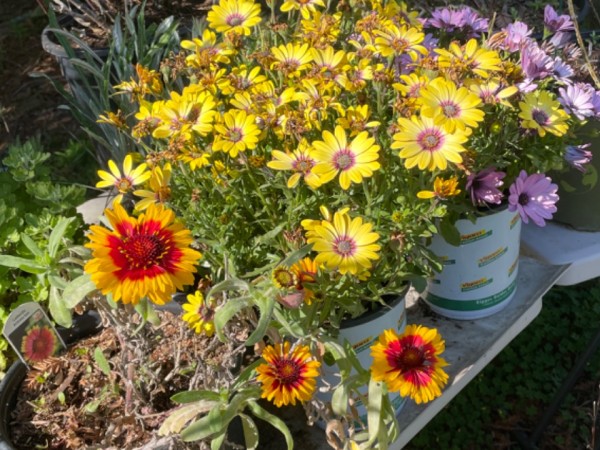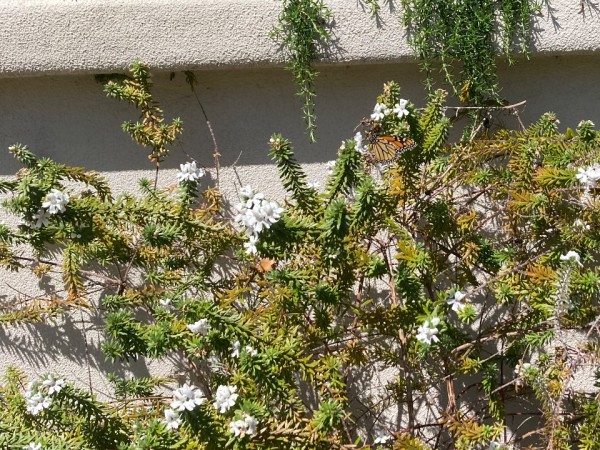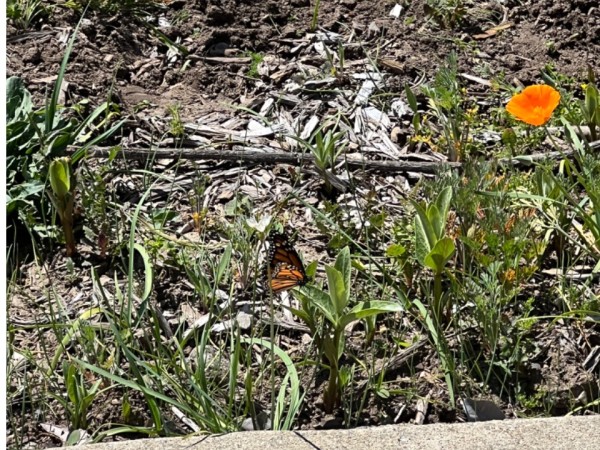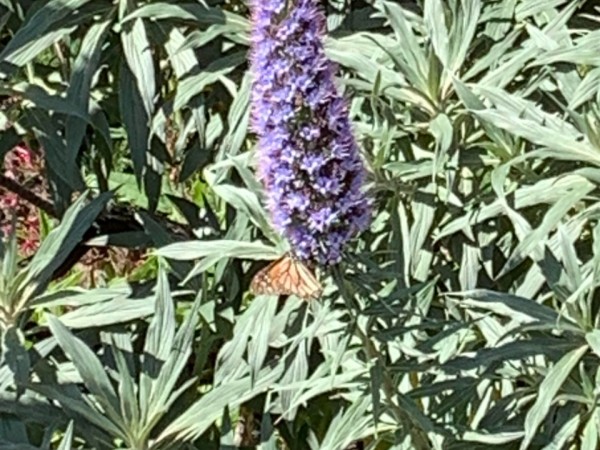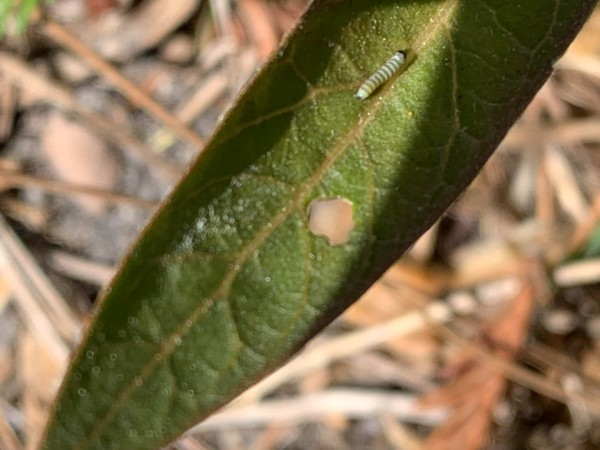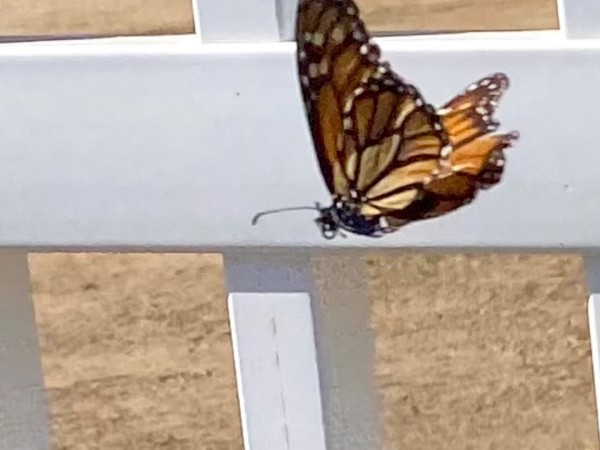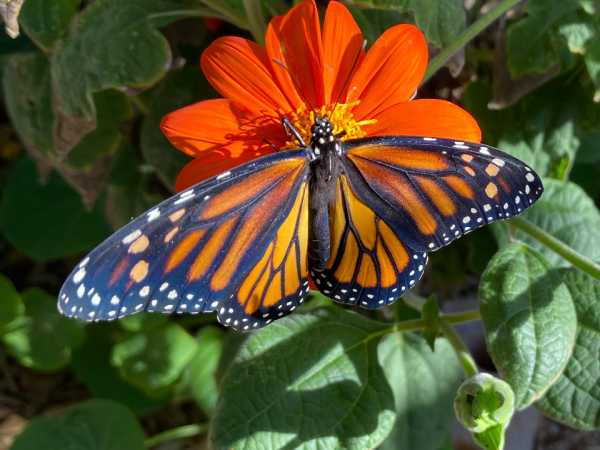Letter From Gail Morris: Western Monarch Spring 2023 Report #8
Western Monarchs Update
Warming temperatures and fair skies helped increase the number of monarch sightings this week, especially in California. This is a trying time when many overwintering monarchs are reaching the end of their life but their offspring are often hidden as immatures – eggs, larvae, or pupae - on milkweed or nearby plants. So we wait and hope for signs of a new generation to propel the leading edge of monarchs into the breeding grounds and expand their numbers before their migration stalls for the summer season.
Monarch & Milkweed Sightings
Thank you to everyone who posted details of their monarch sightings and photos this week!
On April 12, Carl reported 3 monarchs in San Leandro, California. “I’ve seen 3 or 4 Monarchs this year, one of them was laying eggs in our milkweed plants she was older looking and faded, we have an overwintering site a few blocks away at the San Leandro Maria in California. The milkweed was in pots so I moved them into a habitat that I keep outdoors, we should start seeing Catapillar’s [sic] real soon. :)”
Kaitee in Murrieta, California, found her first monarch egg on April 15. “On my giant milkweed that survived the winter. None seen on narrow or California yet.”
Monica spotted her first two monarchs of the season in San Diego, California on April 20. “First Monarch butterfly seen in the neighborhood this season, 2023.”
On April 22, Lisa in Glendora, California saw her first two monarchs of the season. “One in the front yard on young Showy Milkweed shoot. One in the backyard on Narrowleaf milkweed.”
Joyce reported 15 monarchs on April 22, too, in Mountain View, California. “Counted 15 monarch butterflies at Google today. It was warm and sunny. Most were flying or nectaring on Pride of Madeira and Sea Lavender but the wildflowers there are plentiful so a lot to nectar on.” Joyce also saw one monarch larva. “The milkweed is sprouting at Google and the monarchs are about. This is the only plant I inspected but immediately spotted this monarch larva.”
On April 23, Tina in Riverside, California, reported her first monarch as well. “She laid several eggs on 3 different plants.”
Signs of the Season
I asked avid monarch watchers throughout the Southwest, “Anyone seeing monarchs?” The responses were almost unanimous, “Nope!” Several replied they saw a few a month ago but none now. A few monarchs were seen in Lake Havasu, Mesa, and Gilbert, Arizona, but fewer than usual for late April. At first, this sounds chilling, especially given the intense winter storms that ripped through California right when the spring migration was beginning. But this lull in sightings is very common this time of year.
Early in March, I drove to Tucson to visit a native plant nursery on the opening day of their weeklong Spring Plant Sale. I remember how cold it was. We were all bundled up and looking for places to stand in the sun’s warmth while exploring the banquet of plants to take home in front of us. This is rare in a climate often too hot too early. Of course, I purchased a variety of native milkweeds to add to my home collection in addition to other plants to take home that chilly day.
Two weeks later I was watering my milkweed still in pots when something moved under a leaf. Sure enough, there was a third instar monarch larva. As I looked, I found a few more. Looks like a few monarch immatures hitchhiked a ride to Phoenix with me from the earlier plant sale. Our cold nights and cooler-than-normal days slowed down their development. This weekend, just in time for Earth Day, a beautiful female monarch freshly eclosed, the first of the season. This is likely happening all around us right now. This new monarch arrival was the first of many new butterfly species all appearing for the first time this season. Suddenly, the season’s first queen butterfly appeared as did a Spring White and Texan Crescent. The warmer temperatures, sunny skies, and longer days are bringing the desert’s other butterflies and pollinators to life as their populations begin to expand as well.
Here is the gift of hope of a new generation of monarchs to flood the summer breeding grounds! Keep your eyes alert when you are out and about and send in your reports and details for us all to enjoy.
Call for sightings
Keep an eye out for monarchs and milkweeds! Despite a much healthier overwintering monarch population, the key to summer breeding will be seen in the progress of monarchs in the next few weeks. Your reports are critical to our understanding of their migration. Urgently needed are reports of sightings of emerging milkweeds and monarchs in any life stage. Provide as much information as you can such as weather conditions (it’s okay to estimate). Your detailed description of what you see can include, but is not limited to, the monarch’s gender and activity and if known, the type of milkweed, and flowers if they are nectaring. Be sure to check milkweeds for eggs, larvae, or pupae if you are lucky to find them.
Thank You!
Gail Morris is the Coordinator of the Southwest Monarch Study (www.swmonarchs.org), a Monarch Watch Conservation Specialist, and the Vice President of the Monarch Butterfly Fund, the Central Arizona Butterfly Association, and the Western Monarch Advocates. The Western Monarch Population News is based on comments provided to Gail Morris. We hope to increase the number of sightings and therefore photos and comments entered into Journey North. We rely on the volunteers who communicate regularly with Gail and who agree to participate in our effort to increase awareness of the population of Western Monarchs. You can reach Gail at gail@swmonarchs.org

